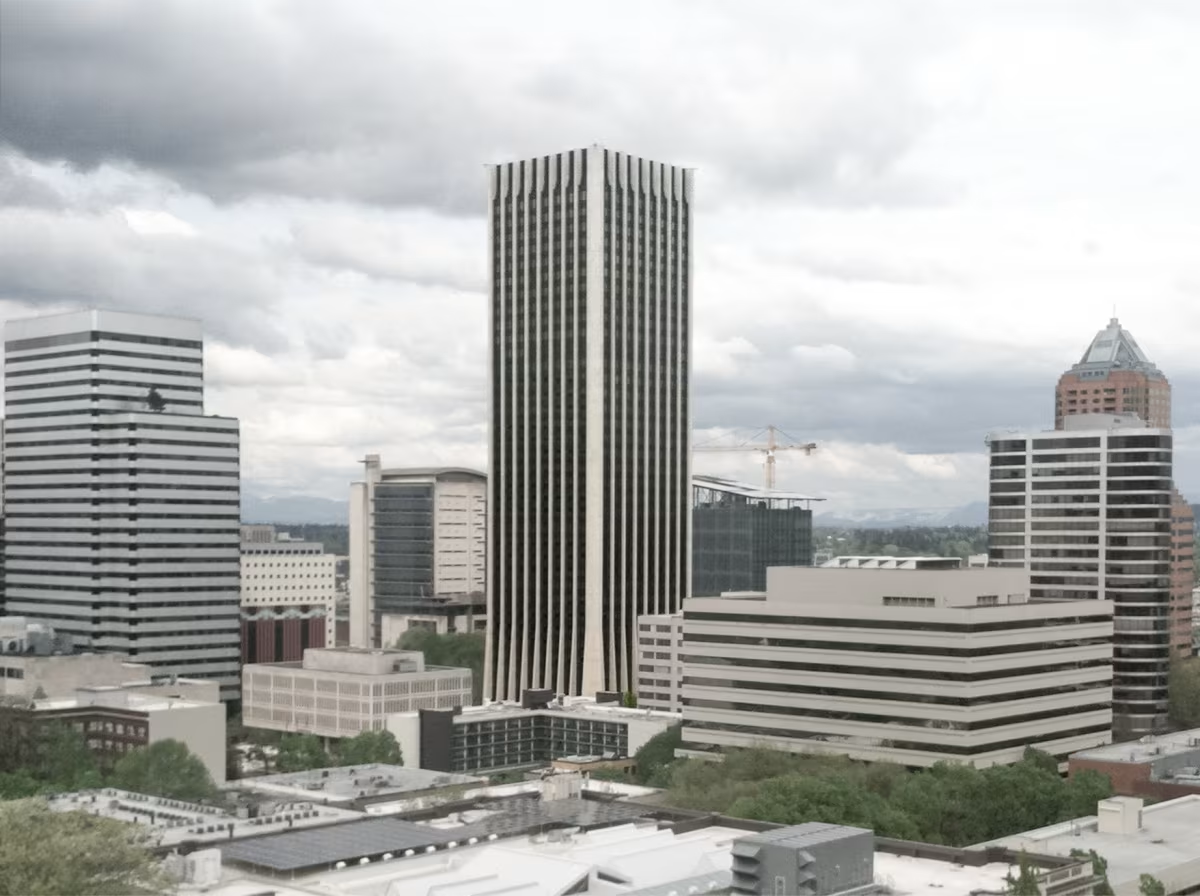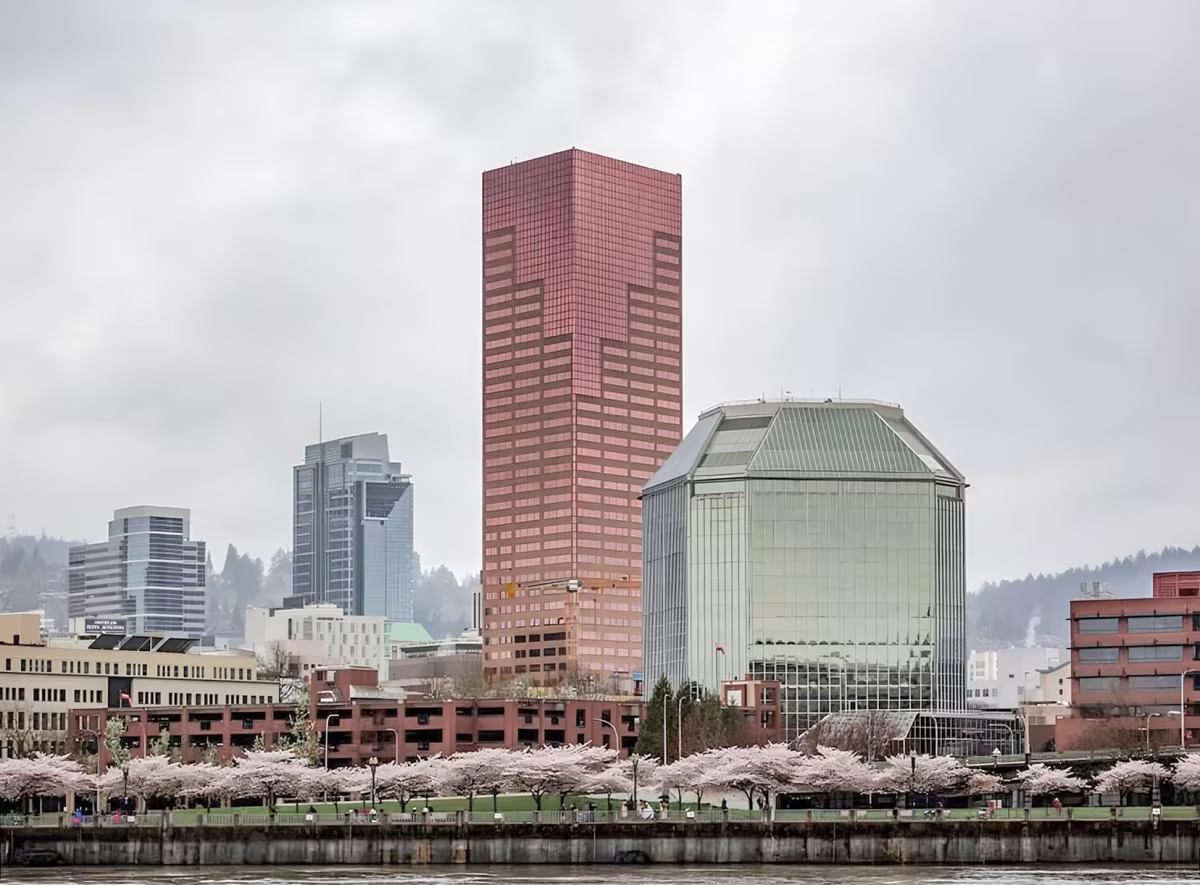Wells Fargo Center vs U.S. Bancorp Tower


Comparing the Wells Fargo Center and the U.S. Bancorp Tower is interesting because they both rise in Portland, OR, yet they were conceived by two different design teams, Charles Luckman and Skidmore, Owings & Merrill, and were completed at different points in time. They were finished more than a decade apart.
This contrast within the same city allows us to see how different creative minds interpreted the evolving needs of Portland across time.
Let's take a closer look!
Height & Size
These two towers present an interesting contrast in their proportions. The Wells Fargo Center rises higher at 545ft (166m), while the U.S. Bancorp Tower reaches 535ft (163m). However, the U.S. Bancorp Tower accommodates more floors with 42 levels above ground, compared to 40 floors in the Wells Fargo Center.
This suggests different approaches to interior space design. The Wells Fargo Center has an average floor-to-floor height of approximately 4.2m, while the U.S. Bancorp Tower has more compact floors averaging around 3.9m each.
These different proportions likely reflect the specific needs each building was designed to serve, whether driven by zoning regulations, client requirements, or the intended use of the spaces within. The contrast shows how architects can achieve different spatial experiences even when working with similar overall building scales.
Architectural Style
Both the Wells Fargo Center and the U.S. Bancorp Tower were designed in line with the aesthetic conventions of the Modern style.
Both buildings were completed when the Modern style was already past its peak. This makes them feel like late echoes of the movement, more reflective of continuity or nostalgia than of cutting-edge design at the time.
Uses
Both the Wells Fargo Center and the U.S. Bancorp Tower were designed to serve as commercial towers, and that has remained their main use since their completion, serving similar roles in the urban fabric.
Both towers provide significant parking capacity, with Wells Fargo Center offering 500 spaces and the U.S. Bancorp Tower offering 1005.
Structure & Facade
Both towers share the same structural solution, a Frame system.
A frame structure uses a grid of columns and beams to carry the building's loads. This frees the walls from structural duties, allowing for flexible floor plans and larger windows.
However, when it comes to the facade, both buildings use different approaches. The Wells Fargo Center uses a Curtain Wall facade, while the U.S. Bancorp Tower uses a Modular facade.
A Curtain Wall facade like the one seen in the Wells Fargo Center uses a lightweight glass curtain wall hung from the structure, while a modular facade like the one seen in the U.S. Bancorp Tower employs prefabricated panels, often mixing solid surfaces with smaller windows.
| Wells Fargo Center | U.S. Bancorp Tower | |
|---|---|---|
| Charles Luckman | Architect | Skidmore, Owings & Merrill |
| 1969 | Construction Started | 1981 |
| 1972 | Year Completed | 1983 |
| Modern | Architectural Style | Modern |
| Commercial | Current Use | Commercial |
| 40 | Floors Above Ground | 42 |
| 166 m | Height (m) | 163 m |
| 19 | Number of Elevators | 20 |
| Frame | Structure Type | Frame |
| Steel | Vertical Structure Material | Steel |
| Concrete And Steel | Horizontal Structure Material | Poured Concrete Over Metal Decking |
| Yes | Facade Structural? | No |
| GBD Architects | Interior Designer | Scott & Edwards Architecture |
| OR | State | OR |
| Portland | City | Portland |
| 1300 SW 5th Avenue | Address | Address 111 SW 5th Avenue |